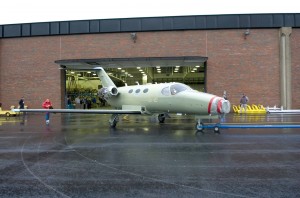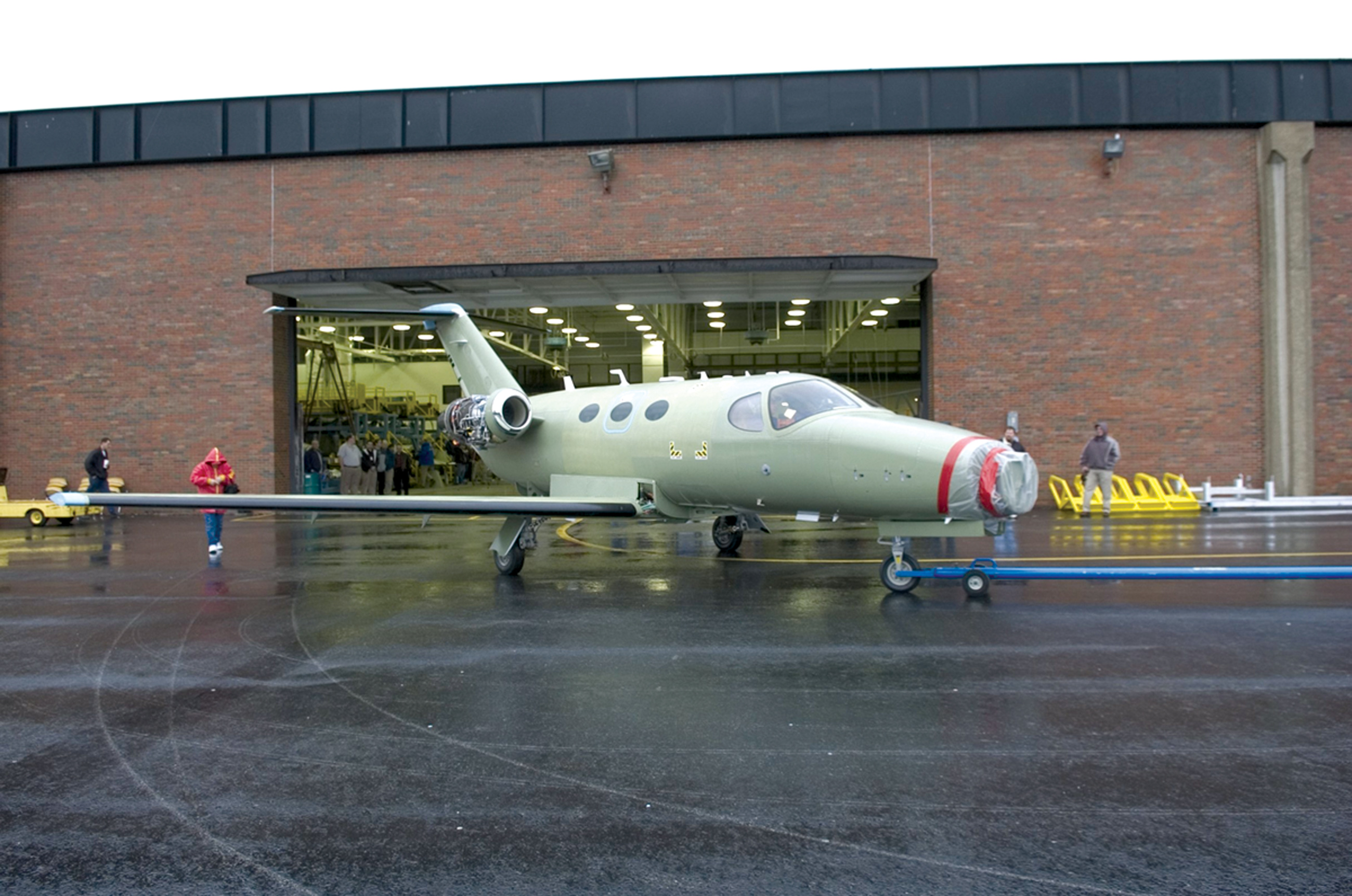S. Clayton Moore

Cessna’s new Mustang heads out from the hangar to complete its first engine run on March 22, 2005. The prototype’s engines were installed in February. The company expects to achieve engine certification by the end of the year.
Cessna is getting ready to loose its new Citation Mustang. What better place to free the aircraft than at its expanding facility in Independence, Kansas. The company has been developing the aircraft for more than two years now. Company officials anticipate its first flight and engine certification to be completed by the end of the year, followed by full certification and first deliveries in 2006.
The Mustang is Cessna’s newest entry-level business jet. It’s powered by a newly developed Pratt & Whitney Canada PW615F engine, which is flat rated at 1,350 pounds of takeoff thrust at sea level (to ISA+10 degree C), and controlled by a dual-channel full authority digital engine control. The PW615F is the first 600 series engine that Pratt & Whitney Canada has delivered to any manufacturer.
“Our new PW600 family of general aviation turbofan engines is designed to provide operators with optimum value and performance while significantly reducing ownership costs,” said John Wright, vice president of business aviation and military engines.
The 40-foot-long Mustang has a wingspan over 42 feet. It will be certified later this year as a FAR Part 23 aircraft with a cruise speed of 340 knots and a maximum operation altitude of 41,000 feet.
The Mustang’s parts and tooling have been designed using CATIA V5, an enhanced engineering design software program. Improvements in engineering and manufacturing technologies have made it possible for Cessna to co-create parts faster than previous Citation programs, resulting in improved aerodynamics as well. The tooling process also takes advantage of a sophisticated product handling system that allows Cessna to build the airplane from the exterior shell inward.
The Mustang will incorporate an avionics suite from Garmin International including the G1000, Garmin’s new integrated glass cockpit with three large electronic flight instrument system displays, two 10-inch primary flight displays and a 15-inch multi-function display at the center for the panel. Cessna is also testing Garmin’s autopilot and autopilot effected flight control systems. The suite offers a whole range of innovations that Cessna CEO Jack Pelton calls “a revolutionary difference, particularly in situational awareness.”
On March 22, the company began engine testing and basic taxi evaluations, leading up to a first flight scheduled for this summer. The P&WC engine completed its maiden flight in late April 2004, flown on a Citation Jet test bed from Cessna’s Kansas facility, and has since accumulated more than 210 hours of flight time.
Cessna announced a $20.4 million expansion to its 213-acre Independence facility in December of last year. The major development will include the construction of a new 90,000-square-foot flight/delivery building and an 11,000-square-foot completion center.
More than 600 employees work at the Independence facility. The company expects to increase that workforce by approximately 500 employees over the next several years to support production and delivery. Construction on the new facilities is expected to be completed by the end of the year.
Cessna, a subsidiary of Textron, Inc., has already received firm, nonrefundable orders for more than 230 Citation Mustangs, priced at approximately $2.4 million. The company anticipates that deliveries for the aircraft will be higher than any other Citation Model.
For more information, visit [http://www.mustang.cessna.com].











